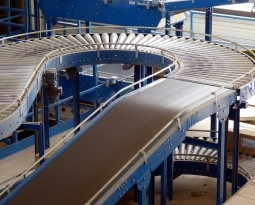New Hampshire Patent of the Month – October 2023
When it comes to precision manufacturing, every micrometer counts. For years, engineers and machinists have been striving to achieve greater accuracy in CNC (Computer Numerical Controller) machine tools. Enter Moore Nanotechnology Systems, LLC, a company at the forefront of R&D in this field, which has developed a groundbreaking error compensation method that promises to elevate precision machining to a whole new level.
Traditional material removal processes, such as jig grinding, have been used to create precision features in workpieces. These methods are capable of achieving sub-micron form accuracy. However, even the smallest errors can be critical, especially in industries that require the highest levels of precision.
The innovation at the heart of this breakthrough is an error compensation method that significantly improves the geometry accuracy of machined workpieces. The CNC machine tool is set to work, removing material from a workpiece according to a specific tool path trajectory. Moore Nanotechnology’s method can be applied to various CNC machine tools, including those with linear and rotational axes.
The first machined workpiece undergoes meticulous metrology, where its geometric accuracy is compared to the desired geometry. Any discrepancies or errors are identified and quantified, ensuring the highest precision in the measurements. To correct these errors, Moore Nanotechnology’s system creates a correction point template. This template mirrors the identified errors with respect to the desired geometry, essentially creating a guide for precision improvement. The system superimposes the correction points onto the linear and/or rotational axis servo commands to modify the toolpath trajectory. This corrected trajectory is established after the initial trajectory generation but before the execution of the commands.
With the corrected toolpath trajectory in hand, the CNC machine tool is set to work once again. Material is removed from the first machined workpiece or a second workpiece, but this time with an improved geometry accuracy of better than 2 micrometers in comparison to the desired geometry.
Moore Nanotechnology’s error compensation method can be applied to various CNC machine tools, such as those using grinding wheels, milling tools, or boring tools. The method offers the flexibility of utilizing internal or external processors for generating the corrected toolpath trajectory, and it ensures the creation of a corrected toolpath trajectory that’s compatible with the machine’s processor.
Moreover, this innovation brings metrology to the forefront of precision manufacturing. The first machined workpiece can be measured for geometric accuracy directly on the CNC machine tool or on an independent metrology device. This versatility opens up new possibilities for error correction and quality control.
Are you developing new technology for an existing application? Did you know your development work could be eligible for the R&D Tax Credit and you can receive up to 14% back on your expenses? Even if your development isn’t successful your work may still qualify for R&D credits (i.e. you don’t need to have a patent to qualify). To find out more, please contact a Swanson Reed R&D Specialist today or check out our free online eligibility test.
Who We Are:
Swanson Reed is one of the U.S.’ largest Specialist R&D tax advisory firms. We manage all facets of the R&D tax credit program, from claim preparation and audit compliance to claim disputes.
Swanson Reed regularly hosts free webinars and provides free IRS CE and CPE credits for CPAs. For more information please visit us at www.swansonreed.com/webinars or contact your usual Swanson Reed representative.

















